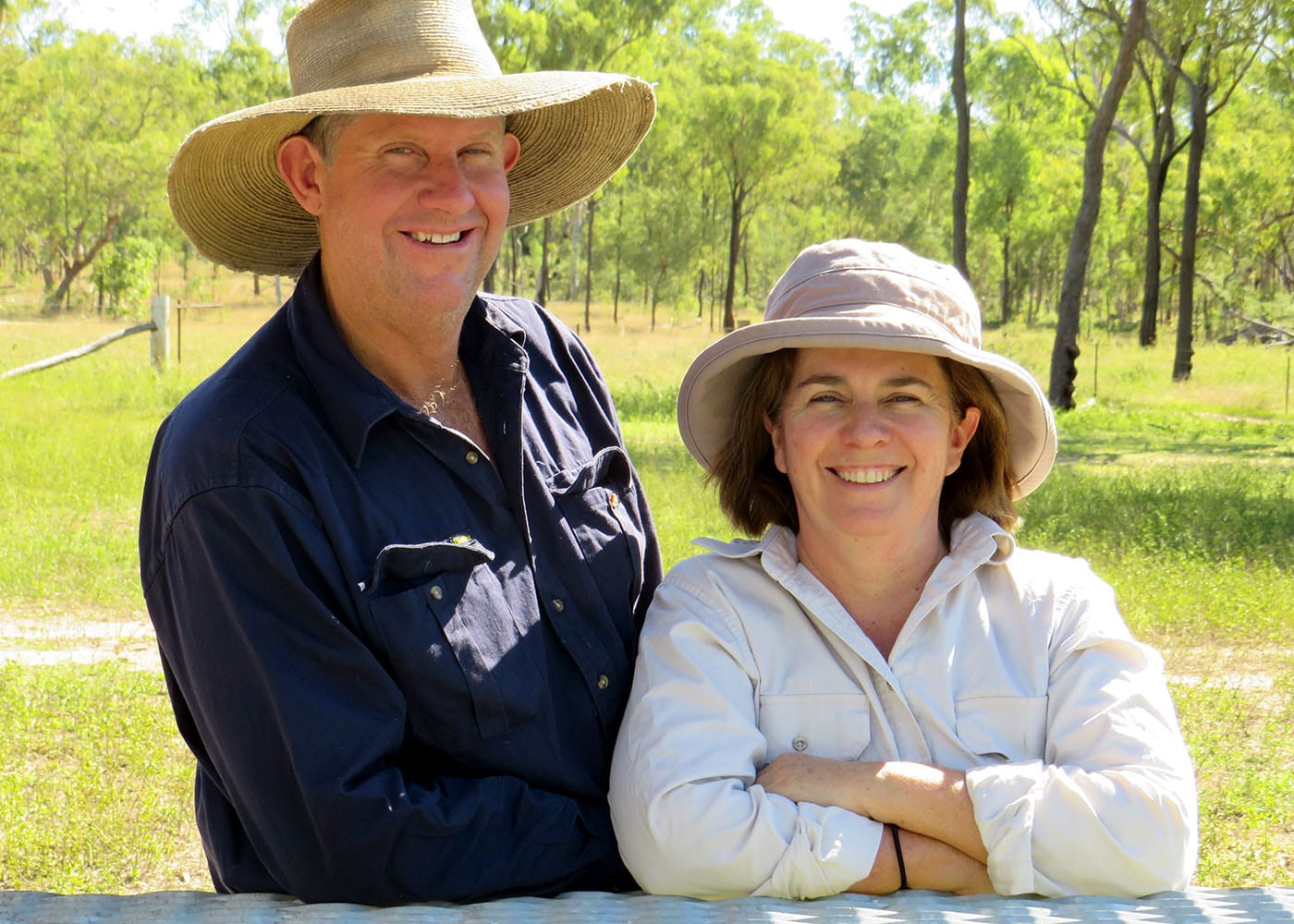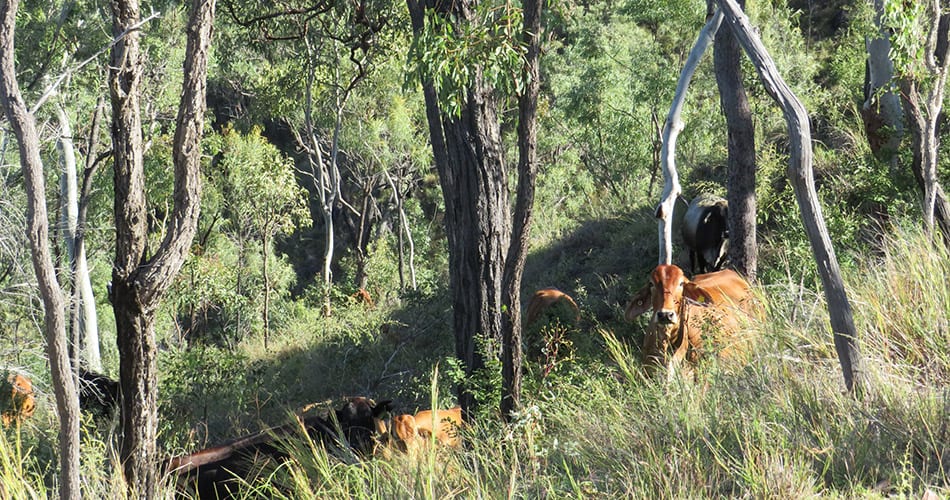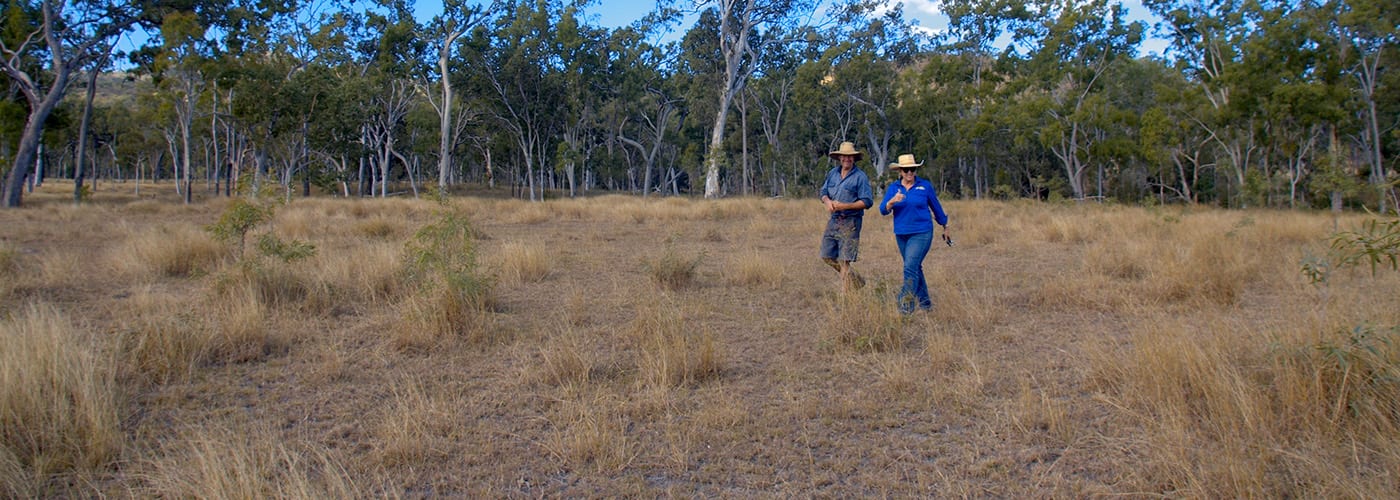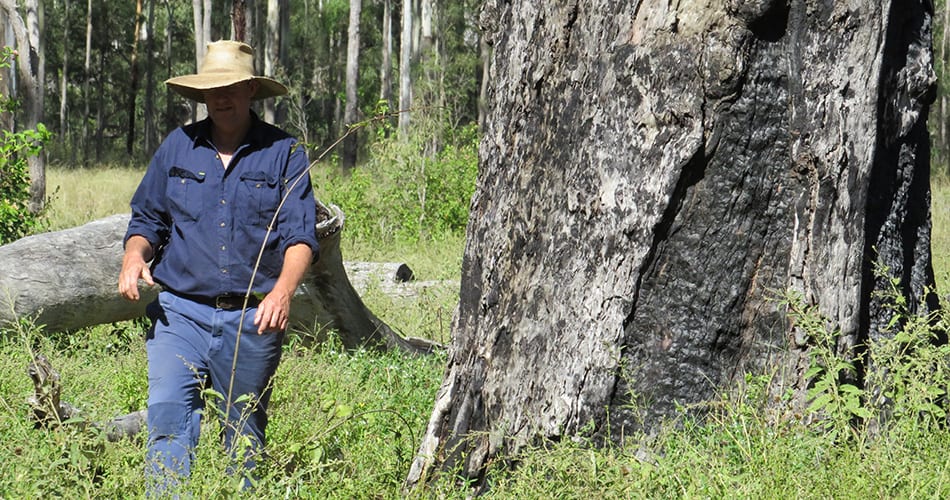
Making every hectare work at Flagstone Station
WHEN manager Brett Scott moved to Flagstone at the end of 2017, he did so with eyes wide open.
The place was in need of attention, and he was up for the challenge.
He also had a clear vision to make Flagstone a profitable and sustainable breeder business for long-term success.
Traditional management of Flagstone had been continuous grazing and constant stock access to waterways. As a consequence, the landscape was in steady decline.
Pastures were degrading through loss of soil structure, and species variety had reduced with Indian couch being the dominant species.
New to the Bowen, Broken, Bogie (BBB) catchment, Brett and wife Siobhan had a suite of ideas and plans and they enlisted the support of NQ Dry Tropics.
By simultaneously undertaking Landholders Driving Change (LDC) and Over The Fence* projects, fencing and water infrastructure was installed, and new grazing practices to improve soil health and pasture diversity were introduced.
“From the outset, it was evident that a whole of property plan was needed to make Flagstone sustainable and easier to manage,” Mr Scott said.
“Carrying capacity was limited because of a lack of fencing and water points which meant we weren’t able to use pasture further away from Flagstone Creek.
“We installed fencing at the head of the creek to reduce grazing pressure along the creek banks, so these areas can now regenerate.
“We also established extra water points which is allowing cattle to rotate around the property without the need to enter riparian zones for water.
Brett and Siobhan Scott are all smiles at Flagstone Station.
Flagstone manager Brett Scott and NQ Dry Tropics Senior Grazing Project Officer Adrienne Hall discuss planning.
Improved water and fencing infrastructure means the herd can graze the hilly country.
“They’re now grazing the hills, not just the flat country.”
Changing the grazing system on Flagstone has been the single biggest change to overall herd production. Rotational grazing and wet season spelling enables Mr Scott to rest country and reduce overgrazing.
By the time the last paddock in the series has been grazed, the first has been rested, allowing sufficient pasture growth for the grazing sequence to start again.
It’s also allowing higher paddock-by-paddock stocking rates, and is supporting the growth of palatable perennial pasture species.
Mr Scott supplements feed for up to 10 months of the year, so it was important to align the supplementary feeding program with breeder management objectives.
“That’s why I was keen to be part of the Normanby Road Cluster Group that’s being facilitated through the LDC project,” Mr Scott said.
LDC’s Grazing Support program has enlisted the expertise of agriculture consultant and qualified nutritionist Jim Wade of Wade Agriculture Consultants to work with the cluster group to determine how best to provide cattle with a balanced diet all year round.
The group is made up of five properties including Flagstone, Sutherland, Mount Crompton, Shannonvale and Normanby, all accessed via Normanby Road, hence the name.
Each property undertook diagnostic tests of plant tissues, soil and water to help graziers understand the science behind how best to give their herd a balanced diet to optimise feed efficiency, weight gain and production outcomes.
“Jim’s input has been invaluable,” Mr Scott said.
“He’s unpacked the analysis of the samples and devised supplements tailored specifically for our needs.
“Being part of a cluster group has been really beneficial.
“We’re all in a similar situation, so camaraderie has been built while we go on this journey.
“You learn a lot from your peers. It’s enabled us to be able to bounce different ideas and share information and experiences.”
Flagstone Station manager Brett Scott and NQ Dry Tropics Senior Grazing Officer Adrienne Hall inspect project sites.
Mr Scott values continuous learning.
For him this has included undertaking training, enlisting the help of experts, attending demonstration days, and industry-led workshops and being part of a cluster group to keep abreast of the latest science and innovations in agriculture.
Continuous planning and monitoring is also important.
Once the infrastructure was established, monitoring and controlling the grazing management plan became a major input requirement for the operation of Flagstone.
“Thanks to NQ Dry Tropics, through the LDC project I have been able to access resources and people with expertise and this has meant I’ve been able to progress ideas and plans more quickly than if left to my own devices,” Mr Scott said.
“As a result, what has been accomplished on Flagstone in 12 months is impressive”.
* NQ Dry Tropics delivered the Over The Fence project as part of the Reef Alliance, a partnership between 12 industry and NRM groups, facilitated by the Queensland Farmers’ Federation.
Brett Scott inspects pasture cover.





